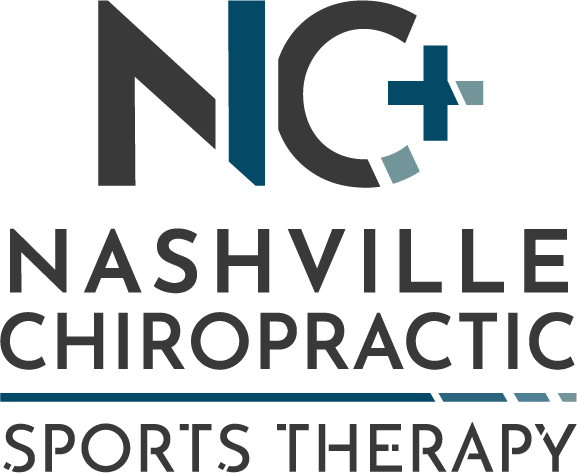Having a lumbar disc herniation can be challenging, but there are effective non-surgical treatment options available. In fact, 97% of disc herniations can be treated successfully without surgery.1 In this comprehensive guide, we will explore how chiropractic care and other non-invasive methods can help manage this condition and improve your quality of life.
What Is It?
To grasp the importance of non-surgical treatments, let's first understand what a lumbar disc herniation is. This condition occurs when the annular fibers in the lumbar spine are disrupted, causing the displacement of the disc's nucleus. Factors such as age, injury, and degenerative changes contribute to the development of herniated discs. While they can affect individuals of any age, they are more prevalent in the middle-aged population. The most common age range of disc herniations is 25-45 years old.2 Approximately 35-45% of adults will experience a lumbar disc herniation at some point in their lifetime and the condition is more common in men.3 So, remember you are not alone in this process.
Symptoms
Lumbar disc herniations can manifest through various symptoms. These include persistent back pain, leg pain (commonly known as sciatica), numbness, and weakness in the affected areas. It's crucial to be aware of specific red flags that indicate a more severe condition, such as loss of bowel/bladder control or progressive weakness, which require immediate medical attention.
How Can it be Managed?
Chiropractic care plays a vital role in the non-surgical management of lumbar disc herniations. Chiropractors utilize various examination techniques to assess and diagnose the condition accurately. Diagnostic imaging is often not required initially, but can be utilized if symptoms are not improving. Treatment may include chiropractic adjustments and spinal manipulations to relieve pain, restore spinal function, and promote healing. Additionally, therapies like soft tissue mobilization and therapeutic exercises can provide further benefits. Exercises may seem daunting at first, but play a crucial role in the management of this condition.
Other Non-Surgical Options
Other treatment approaches include The McKenzie Method. This is a widely recognized protocol used in managing disc-related conditions. It involves a systematic assessment process to identify a patient's directional preference and tailor exercises accordingly. By targeting specific movements and postures, the McKenzie Method can help reduce pain and improve function for individuals with lumbar disc herniation.
In addition to traditional chiropractic care, there are various non-surgical treatment options available. Physical therapy, acupuncture, and dry needling are among the modalities that can effectively reduce pain, inflammation, and promote healing. These therapies, when combined with a comprehensive treatment plan, can provide significant relief and improve overall well-being.
Will It Heal On Its Own?
One common question is whether a herniated disc can heal on its own. The answer lies in the natural healing process. While some mild herniations can resolve, the timeline of recovery depends on various factors. Disc herniations do heal, and are unlikely the cause of your pain if the injury happened years ago. Adopting healthy physical and mental habits, while also engaging in prescribed exercises can support the healing process and prevent further complications. Another common question is how long it takes to see improvements. Over 85% of patients with acute disc herniations will experience relief of symptoms within 6 to 12 weeks. This is another reason why early diagnostic imaging is not required since it would not change the treatment.4
Conclusion
Early diagnosis and intervention are crucial in managing lumbar disc herniations effectively. Seeking non-surgical treatments as soon as symptoms arise can prevent the condition from worsening and reduce the need for invasive procedures. To minimize the risk of developing a lumbar disc herniation, it is important to maintain a healthy weight, engage in regular exercise, and practice proper lifting techniques.
Are you experiencing persistent back pain or leg pain? Schedule an appointment with our experienced providers and explore treatment options that can bring you relief and improve your quality of life. We will tailor a comprehensive treatment plan to address your specific needs, and help you take control of your back pain. Click here to schedule an appointment!
Reference:
Lilly, D. T., Davison, M. A., Eldridge, C. M., Singh, R., Montgomery, E. Y., Bagley, C., & Adogwa, O. (2021). An Assessment of Nonoperative Management Strategies in a Herniated Lumbar Disc Population: Successes Versus Failures. Global spine journal, 11(7), 1054–1063. https://doi.org/10.1177/2192568220936217
Vizniak, N. (2020). Orthopedic Conditions. Professional Health Systems Inc.
Nachemson AL. Prevention of chronic back pain. The orthopedic challenge for the 80's. Bulletin of the Hospital for Joint Diseases Orthopaedic Institute. 1984;44(1)
Al Qaraghli MI, De Jesus O. Lumbar Disc Herniation. [Updated 2023 Feb 12]. In: StatPearls [Internet]. Treasure Island (FL): StatPearls Publishing; 2023 Jan-. Available from: https://www.ncbi.nlm.nih.gov/books/NBK560878/

